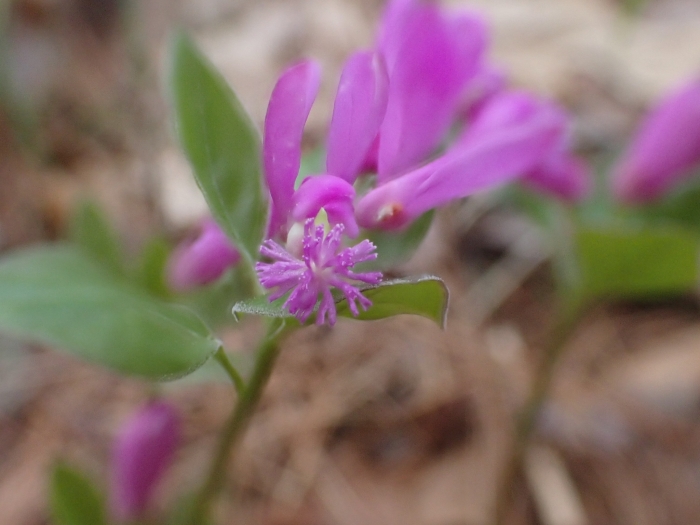Gaywings
(Polygaloides paucifolia)
Gaywings (Polygaloides paucifolia)
/
/

Eli T.
CC BY 4.0



















































Estimated Native Range
Summary
Gaywings are valued for their unique flowers and ability to thrive in shaded woodland gardens. They are often used as ground cover or in rock gardens, naturalized areas, and borders that mimic their native forest floor habitat. While they prefer part shade, they can tolerate full shade and require medium to low amounts of water, making them relatively low-maintenance. They grow best in humus-rich, well-drained soils with medium moisture. Despite their delicate appearance, they are hardy and can withstand cold winters. However, they may struggle in hot, dry conditions and are not suited to arid environments.CC BY-SA 4.0
Plant Description
- Plant Type: Herb
- Height: 1.5-6.5 feet
- Width: 1.5-6.5 feet
- Growth Rate: Slow
- Flower Color: Pink, Purple
- Flowering Season: Spring, Summer
- Leaf Retention: Evergreen
Growth Requirements
- Sun: Part Shade
- Water: Low, Medium
- Drainage: Medium
Common Uses
Bee Garden, Border Plant, Butterfly Garden, Low Maintenance, Rock Garden
Natural Habitat
Cool, moist, deciduous woodlands and coniferous forests of the Eastern and North Central United States, as well as Southern Canada
Other Names
Common Names: Snoopy Flower , Bird-On-The-Wing , Fringed Milkwort , Fringed Polygala , Gaywing Milkwort , Pink-Fringed Milkwort , Polygala Paucifolié , Polygale Paucifolié
Scientific Names: Polygala paucifolia , Polygaloides paucifolia , Polygala pauciflora , Polygala paucifolia f. alba , Polygala paucifolia f. albiflora , Polygala paucifolia f. paucifolia , Polygala paucifolia f. caerulea , Polygala paucifolia f. vestita , Polygala purpurea , Triclisperma paucifolia
GBIF Accepted Name: Polygaloides paucifolia (Willd.) J.R.Abbott